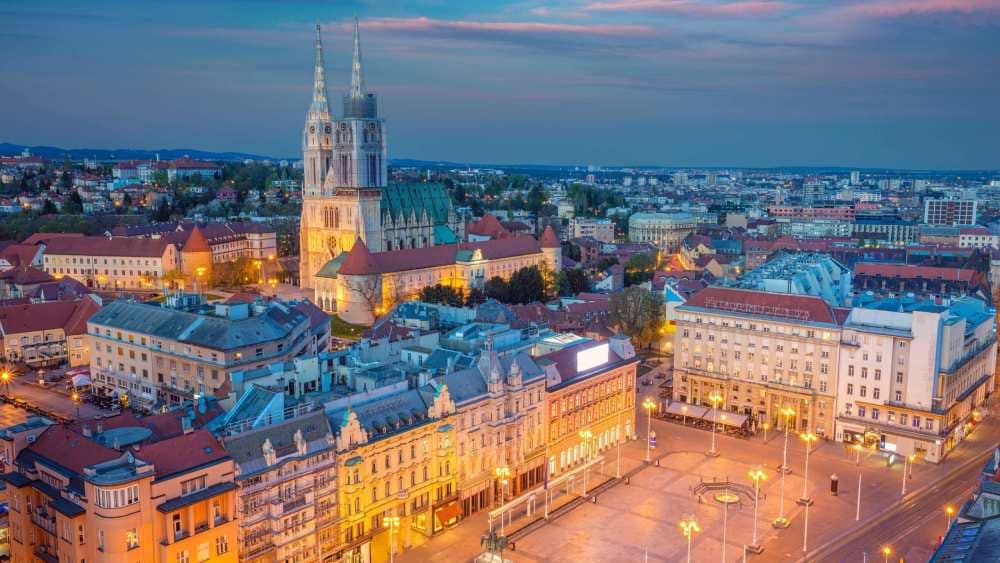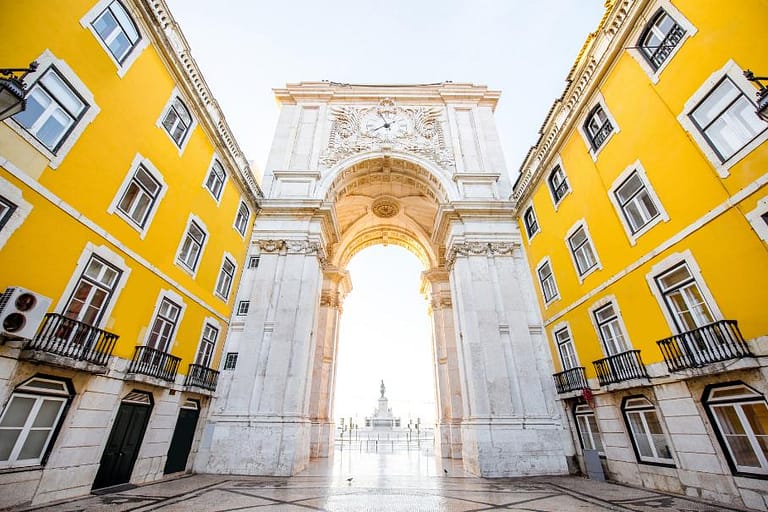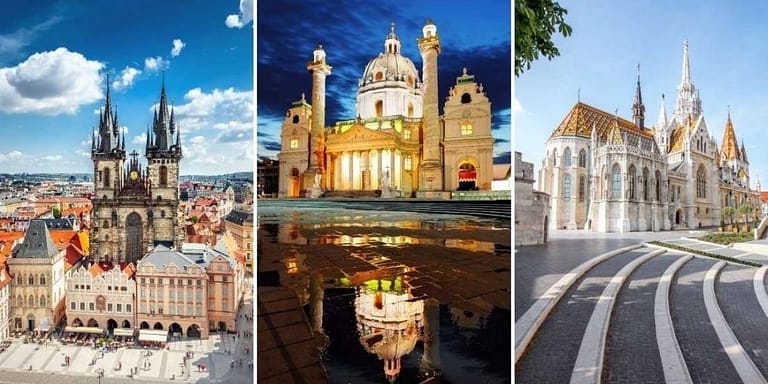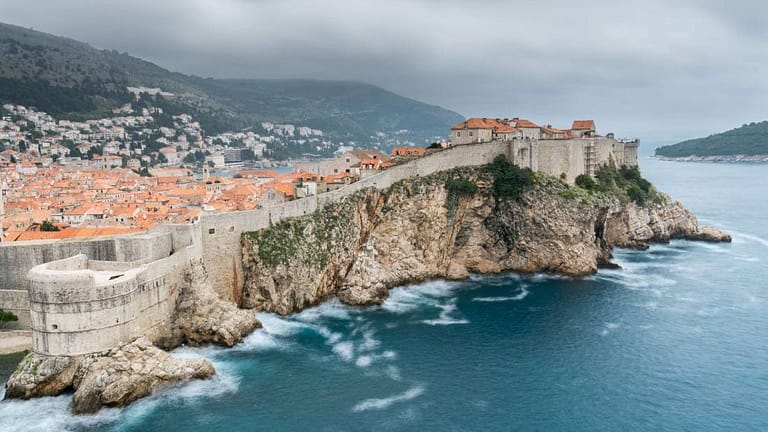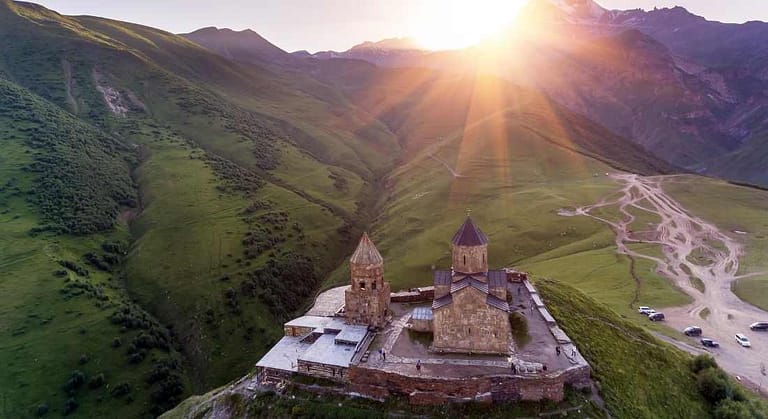Top Zagreb Attractions: Things to do and see (2024)
When it comes to visiting Croatia, most travellers head to places like Dubrovnik, Split or one of the sunny islands. However, Zagreb, the underrated capital of Croatia, is where you should go, especially if you love history, art and culture. Zagreb attractions range from quirky museums, beautiful buildings and ubiquitous patios to cultural events, lovely people and a laidback vibe. It’s a perfect destination for culture, art and history lovers looking for a new adventure.
While it may not be as popular as other European cities, Zagreb is one place you will fall in love with. With its red-tiled roofs, cobblestone streets, impressive church spires and a blend of architectural styles, Zagreb has a lot to offer visitors looking for a glimpse into Croatia’s rich past and vibrant present.
Affiliate Disclosure – This post contains affiliate links. If you make a purchase through these links, I may earn a commission. This doesn’t affect your purchases or any fees you may pay for the product or service. Read more in my DISCLAIMER.
A brief history of Zagreb
Zagreb, Croatia’s beating heart, boasts a rich history stretching centuries. Nestled in central Europe, Zagreb’s beginnings date back to Roman times, with the urban settlement of Andautonia flourishing in what is now Š?itarjevo, a district of modern Zagreb.
The name Zagreb first appeared in 1094, when the Zagreb bishopric was founded. By 1242, Zagreb had gained prominence as a free royal city. Over the centuries, Zagreb witnessed periods of prosperity and hardship. From 1557 onwards, it served as the capital of Croatia and faced challenges like fires, plagues, and foreign invasions.

The 19th century marked a period of significant growth for Zagreb. The Croatian National Revival blossomed here, and the city became a center of cultural and educational institutions. Zagreb was officially declared the capital of Croatia in 1845. Zagreb embraced new architectural styles, established important cultural institutions, and became a bustling metropolis.
The 20th century brought its share of challenges, including World Wars. However, Zagreb persevered and emerged as a modern metropolis. Today, it is the political, cultural, and economic heart of Croatia. Croatia’s independence in 1991 marked a new chapter for Zagreb. Today, the city thrives as a vibrant cultural and economic hub, proudly showcasing its rich heritage alongside a modern spirit.
First impressions of Zagreb
We opted to stay near the city centre in one of those old buildings covered in decades of grime and soot. Despite that, you could see the architectural splendour wanting to be uncovered. Inside, we discovered surprisingly sturdy bones, gorgeous wooden floors, and vault-like locks that hinted at its storied past.
Find your own unique stay in Zagreb today! Check availability.
Our host told us that the building once belonged to a now-defunct bank, and many of its bankers had apartments here. Judging by the spaciousness of the apartment and the generous separation between our living quarters, these bankers had once lived quite comfortably.

Things to do in Zagreb
Zagreb is full of charm no matter where you go, so there are plenty of things to do in Zagreb for everyone. It is a very walkable city with a gorgeous Old Town and lots of pedestrian areas. All lined with shops and patios. Did I mention patios? They’re everywhere. There are streets filled with them, and all are packed with people. We felt like we had hit the jackpot.
Explore Zagreb’s Upper Town (Gornji Grad)
Zagreb’s Upper Town is a historic district perched on a hill and is the heart of Zagreb’s past. Here, you’ll find charming cobblestone streets, medieval architecture, and iconic landmarks along narrow cobbled streets lined with baroque palaces, medieval churches and lovely cafes.
Unwind in the Lower Town (Donji Grad)
In contrast to the charmingly medieval Upper Town, Zagreb’s Lower Town is a vibrant district pulsating with modern energy. Developed in the late 19th and early 20th centuries, it showcases grand neoclassical buildings, broad avenues and bustling city life. Here, you can immerse yourself in art, enjoy the grand squares and parks, indulge in retail therapy or soak up the lively atmosphere at one of the coffee shops and bars.
Visit the lively Ban Jela?i? Square
The city’s commercial heart for centuries, the square served as Zagreb’s main square. It was originally called “Harmica”- after the tax that was levied on the goods sold. The name was changed in 1848 to Ban Jelacic Square to honour the governor Ban Josip Jela?i?, Croatia’s national hero. After World War II, the statue was removed, and the square was renamed Republic Square. It changed back to its current name in 1990.

Not far from the statue of Jelacic in the square is the Manduševac Fountain, which sits on top of a natural spring. So, what makes this fountain so special? Well, according to the legend, a thirsty and tired soldier was passing by and asked a beautiful woman named Manda to scoop up some water for him. The Manduševac Fountain was named after the woman Manda, while Zagreb got its name from the Croatian word “zagrabiti,” meaning to scoop up water.
It’s a cute story, but there are so many unanswered questions. Was Manda just hanging out by the spring, waiting for some guy to pass by so she could give him water? Very unlikely. Or was she a witch waiting for her fellow witches? You see, apparently, the spring was also a witch meetup. So many questions. I digress.
Get a taste of local life at Dolac Market
An open-air farmer’s market is a staple of any European town. Strolling through rows of vendors is one thing to do in Zagreb that you should not miss out on. We bought some honey and fruit here, all the while wishing we had more time to shop. The market is a fairly “new” addition to the city, dating back to the early 20th century. The officials tore down houses on Dolac to make room for the new market. Judging by its size, that must have been a lot of houses.
Take the shortest funicular ride to the Lotrscak Tower
For a taste of Medieval Zagreb, make sure to head to the Lotrš?ak Tower, built in 1266. The tower also acted as an alarm, summoning residents with bells at sunset before the city gates closed for the night. Today you can enjoy picturesque views of the city and witness the canon-firing tradition every day at noon. Keep in mind that it gets deafening when the canons fire, especially if you’re in very close proximity to the tower. There is a funicular between Lower and Upper Towns. When it opened in 1890, it was the first mode of public transport in the city. Today, the journey takes about 55 seconds.

Explore St. Mark’s Church (Crkva svetog Marka)
Upper Town is also where you’ll find the iconic St. Mark’s Church, with its pretty tiled roof in red, blue and white. What makes the roof unique is the coat of arms, one for the Kingdom of Croatia, Dalmatia and Slavonia and the other for Zagreb.

The church dates back to the 13th century and is one of the oldest structures in the city. Inside, you’ll find Gothic arches along with 14th—and 15th-century art made by masters of the day. We didn’t get a chance to check out the inside, but I’m hoping to do so next time.
Take a walk through history on Tkalciceva Street
Tkal?i?eva Street is the perfect street for a stroll. In fact, you can probably spend a lot of time here. When it comes to all the things to do in Zagreb that involve food and beverage, this is the place to be. This pedestrian-friendly street is lined with restaurants, coffee shops, bars and shops. The street follows the path of a creek and a natural boundary between the church-controlled Kaptol and the secular Gradec.

Fun fact: This also used to be Zagreb’s Red Light district between 1899 to 1941. Today it’s a lot more family-friendly. Ponder that over a pint or two.
Marvel at the Medieval Stone Gate (Kamenita vrata)
The Medieval Stone Gate is an interesting spot. It’s the only intact gate, providing entrance to the Upper Town. Originally built in the Middle Ages, it was rebuilt in the 18th century. Here, you’ll find a seemingly out-of-place chapel dedicated to the Virgin Mary. Its main feature is a painting of Mary rescued from a fire in 1731.

Marvel at the Zagreb Cathedral ( katedrala Svetog Stjepana)
Apparently, the Cathedral, with its slender towers, is the tallest building in Croatia and one of Zagreb’s most defining symbols. The original, dating back to the 11th century, was damaged over the centuries. What you see today was restored after the 1880 earthquake. This Neo-Gothic style church with Baroque altars is surrounded by Renaissance defensive walls dating back to the early 16th century. Talk about a historical tapestry.

Step back in time at the Hotel Esplanade
Built in 1925 near the main rail station, Hotel Esplanade catered to Orient Express passengers. Zagreb was a stop for the luxurious train service between Paris and Istanbul. Even then, there were many things to do in Zagreb for visitors. The rich and famous stayed at the hotel, making it the centre for social events. It still looks impressive today.

Pay homage to a great mind at the Tesla statue
We stumbled upon the statue dedicated to the famous innovator quite by chance. Tesla, born and raised in Croatia, was honoured with the statue on the 150th anniversary of his birth.
People-watch at Petar Preradovic Square
The square, named after a Croatian general with a fondness for poetry, is a lively place for people-watching. Also known as Flower Square, after the many flower stalls that have been a staple here for centuries. Lined with cafes and restaurants, it’s another great place to hang out and socialize. You can also check out the nearby Oktogon shopping area. The pre-WWI building’s central area is shaped like an octagon under a glass-stained dome.

The Art Pavilion
Zagreb’s Art Pavilion is another beautiful yellow building. It also has an interesting story. It was built for the Budapest Millennial Exhibition of 1896, using the latest metal framing techniques. After the exhibition, the pavilion was disassembled and transported to Zagreb by train, where it was reassembled. It became the city’s first designated space for art shows and exhibitions.

Enjoy a night out at the Croatian National Theatre
The Croatian National Theatre building is enchanting. Built in a rich Neo-Baroque style and designed by famous Viennese architects, the theatre opened in 1895. The building is dark yellow and it draws you the moment you walk by it. If you’re looking for a more unique experience, get dressed up and enjoy a ballet or an opera show in style.

Marvel at the Main Railway Station
Zagreb’s railway station was built in 1892, connecting the city to Vienna, Budapest and other cultural centres. The building is a mixture of Renaissance and Neo-classical elements and was designed by Hungarian architect Ferenc Pfaff. Not only is the station itself picture-worthy, but so are the views of Zagreb for visitors coming out of the station.

Explore Vlaška
Vlaška is another interesting street to visit when you’re looking for things to do in Zagreb. It’s characterized by one-story houses and traditional workshops. It was settled by Italian traders, referred to as Vlasi in Croatian, giving the street its name. You can always stop for a coffee in a nearby café, and people watch as they pass by.

Unwind in Maksimir Park
Zagreb’s oldest and largest park is a haven of peace and nature. Wander through tree-lined avenues, visit the Zagreb Zoo, or relax by the lake. The park is also home to several pavilions showcasing different architectural styles. If you want to enjoy a relaxing moment outside the city center, especially during the summer months, this is a great place to enjoy a picnic or a coffee.
Dive into history at the Zagreb City Museum
The museum’s collection of artifacts tells the story of Zagreb from prehistoric times to the present day. You’ll find everything from Roman and medieval archaeological finds to paintings, sculptures, and everyday objects that showcase the city’s evolution.
Uncover stories of Love at the Museum of Broken Relationships
This unique and small museum is dedicated to failed love stories. It’s filled with many items donated by ordinary people who want to share their pain. Some stories are funny, some sad, and others really heart-wrenching. It’s a quirky and thought-provoking look at love, loss, and the human experience.
Explore Croatian Art at the Mimara Museum
This museum houses a vast collection of art spanning centuries and continents. You’ll find works by Egyptian pharaohs, European masters like El Greco and Rembrandt, and Croatian artists. It’s a great place to learn about Croatian culture and art history.
Visit the Archaeological Museum
Immerse yourself in Croatia’s ancient past at the Archaeological Museum ( Arheološki muzej). The museum houses an impressive collection of artifacts from the Stone Age to the Middle Ages, including Roman sculptures, Egyptian mummies, and prehistoric tools.
Sip wine in a 200-year-old-cellar
Wine Bar Bornstein is the first and oldest wine shop and bar in Croatia. It’s a Zagreb institution steeped in history and renowned for its ambiance and exceptional wine selection. Located near Zagreb Cathedral, it’s housed in a magnificent 200-year-old brick vaulted cellar and offers a selection of over 100 wines. With arched ceilings, brick finishing and small windows covered with bars, we felt like we were in some sort of a speakeasy.

Consider Zagreb as a winter destination
Zagreb actually has a very famous Christmas market! In fact, Zagreb’s Christmas market, called “Advent in Zagreb,” has won awards for being the best Christmas market in Europe multiple times. It typically runs from late November to early January, and it’s a wonderful festive experience to consider for future trips during the holiday season.
Final thoughts on things to do in Zagreb
Overall, we found Zagreb to be the perfect place to explore. It feels comfortable with lots of green spaces, great restaurants, cultural attractions and amazing architecture. The Croatian capital is one of those destinations that works all year round. Whether you’re into Christmas markets, summer concerts or anything in between, you’ll find Zagrab’s offerings plentiful. Visit Zagreb for a city break, or use it as your starting point for exploring Croatia.
FAQ



